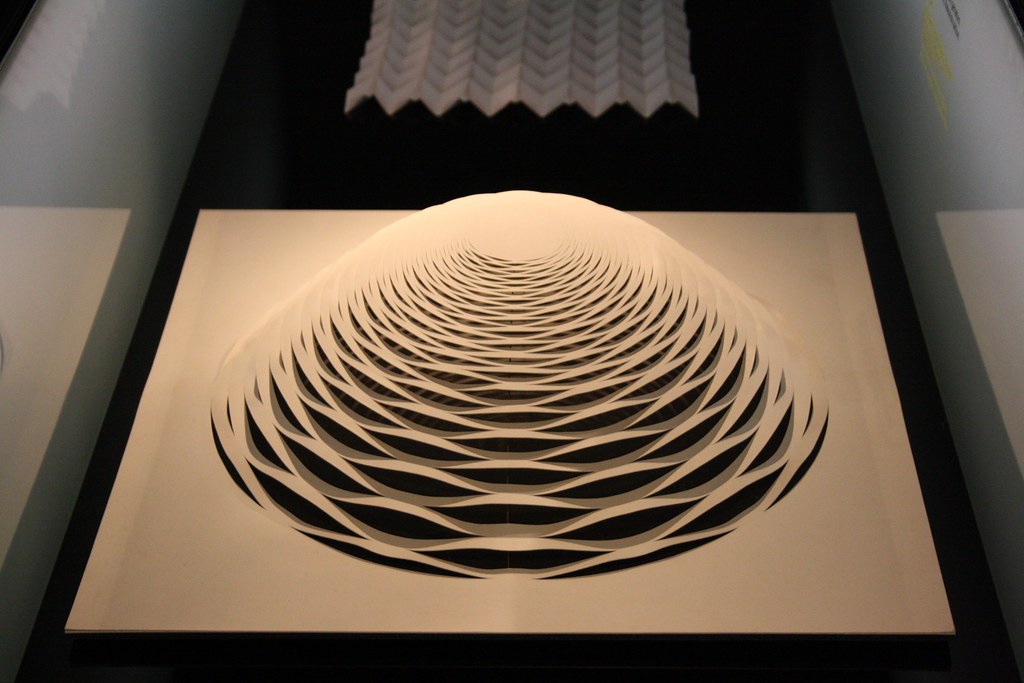German-born American artist, educator, and post-painterly abstractist, Josef Albers was hugely influential as the innovator of styles as Colour Field painting and Op art; however, his greatest accomplishment remains the creation of the Interaction of Color theory.

Image source:https://en.wikipedia.org/wiki/Josef_Albers#/media/File:Josef_Albers.jpg
The life and the legacy
Josef Albers was born in1888, inBottrop, Germany. After attending the Konigliche Kunstschule in Berlin from 1913 to 1915, he became a certified art professor. Albers studied lithography in Essen and attended the Academy in Munich. In 1920 at the age of 32, Albers entered theBauhaus,starting to work as a stained glassmaker at the glass workshop, then around 1923, he began to teach theVorkurs, a basic design course; when the Bauhaus moved to Dessau, in1925, he becameBauhausmeister(professor), teaching alongside fellow artistsPaul KleeandWassily Kandinsky; at this point, his field of expertise included glass, metal, furniture design and typography.

Image source:https://search.creativecommons.org/photos/c50887cd-c0ef-459b-b5ea-bebcd8b8331fbyLejeune Grégory
With the definitive affirmation of the Nazi dictatorship, and the closing of the Bauhaus, he escaped to the US, managing to secure a teaching position at the Black Mountain College, an experimental art school; it was here that he started to develop his artistic theories, beginning with theVariant/Adobesystematica系列(c。1947)lly explored the range of visual effects made possible by subtle variations in color, shape, and positioning of an image’s elements. During this same period, he started showcasing his work, both his current aesthetic experiments and his previous Bauhaus manufacture. In1949, Albers left the College, going on to serve as the chairman of the Design Department atYale Universityfrom 1950 to 1958, where he taught the likes ofRichard AnuszkiewiczandEva Hesse. While lecturing at Yale, Albers began his most famous body of work, the seriesHomage to the Square, an exercise on the optical effects of color within the confines of a uniform square shape. At the age of 70, he left from Yale, expanding his activities to painting, printmaking, murals, and architectural commissions, while publishing poetry, articles, and books on art theory as well, even co-authoring a mural with fellow Bauhaus memberWalter Gropius. In 1971, he became thefirst living artistto be honored with a solo retrospective at theMetropolitan Museum of Artin New York. He died in 1975, in his house in Haven, Connecticut.

Image source:https://search.creativecommons.org/photos/39f15f79-2c03-4ca1-b5e6-68d1c8a3d4b3bymichimaya
Albers left a deep impact onmodernart and its history, reshaping art education and pedagogy as the key for a future audience for art; his proposed approach was non-dogmatic, un-hierarchical, and following the scientific method of observation and experimentation; he aimed to “open the eyes,” of students by disrupting ingrained habits of perception and considering forms apart from their conventional associations, reduced to their basic characteristics (line, shape, material, color). His strategies of “defamiliarization,” such as drawing with the non-dominant hand, mirror writing, exploring optical illusions, and representing “negative” spaces, sharpened visual observation, precision, and awareness and are now an accepted part of the academic training of visual artists.

Image source:https://search.creativecommons.org/photos/40aee206-3ccc-4790-8378-faef56a10cabbyruhr-projekt
Body of work
During his life, Albers focused on several series of paintings, made from similar geometric designs that give ambiguity effects, whose purpose is to systematically explore the effects of perception.
His best-known series, “Homage to the Square” (series started in 1949), is made up of simple repeating and overlapping squares, colored with different shades that create an optical effect of depth. The arrangement of these squares is carefully calculated so that the color of each square optically alters the sizes and spatial relationships of the others. These works formed the basis of hisfirst solo exhibition,first given to a living artist at the Metropolitan Museum of Art, New York City, in 1971.

Image source:https://search.creativecommons.org/photos/bdeab338-616d-4a7b-9788-b6d8930258e2byKent Wang
Besides painting and architectural commissions, Albers published poetry, articles, and books on art. Therefore, he was an important influence on generations of young artists. His main concern was theinteraction of color; that is, seeing what happens between colors. Albers’s approach to colors is democratic and accessible. He preferredcolored paperto paint because paper allowed for the repeated use of a single color. Although he avoided stylistic labels, he is credited with influencing the birth of theGeometric AbstractionandMinimalismmovements.
His self-imposed restriction to monochrome allowed him to approach the full spectrum with remarkable confidence; he wasn’t alone in this approach, similar to that of other great colorists: Georges Seurat restricted his palette to monochrome for two or three years in the1880sas well, andHenri Matissefocused on using prominently black around1918.
The shape of colour
阿尔伯斯并不感兴趣的科学的颜色mixing, or of optics and refraction. His interest in art stemmed from personal interest — he wanted to know how human beings perceived color. He said:
In an age in which increased human sensibility has become such an obvious need in all areas of human involvement, color sensitivity and awareness can constitute a major weapon against forces of insensitivity and brutalization.

Image source:https://search.creativecommons.org/photos/fd6c2188-4f3e-46ee-811f-5c8d4f533130bymoonlightbulb
The artist’s goal is to “reveal and evoke a vision“, a theme very dear to the generation to which he belonged: with other words but wishing to convey the same message,Kleehad stated that: “Art does not reproduce what is visible but makes visible what is not always “. In the work of Albers, the determination to “open the eyes” of those who look comes from the belief that they can see the miraculous in the physical world. And his art is a manifestation of it. For a choice dictated more by the search for an internal thematic continuity than by the desire to identify a chronological evolution, the paintings are organized according to three main guidelines: theline,shape,and thecolor.

Image source:https://search.creativecommons.org/photos/46dfaf65-da30-4719-828e-25fda00d2ccebyworkflo
Info sources:
https://www.theartstory.org/artist-albers-josef-life-and-legacy.htmhttp://blog.yalebooks.com/2017/03/24/spotlight-on-josef-and-anni-albers/http://www.anothermag.com/art-photography/3602/top-10-josef-albers-facts

